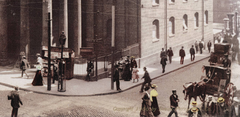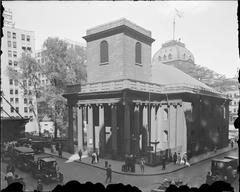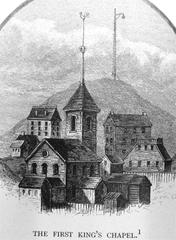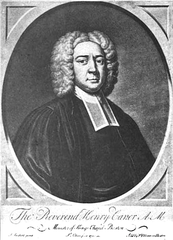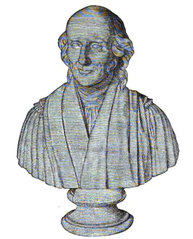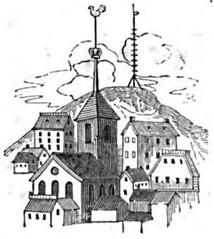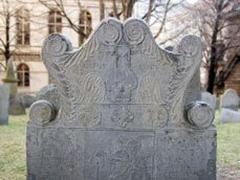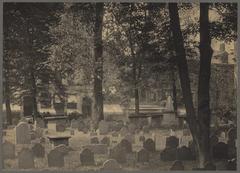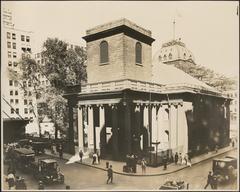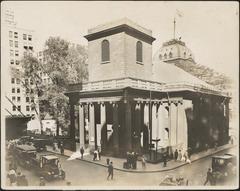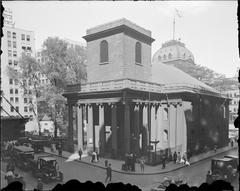
King’s Chapel Boston: Visiting Hours, Tickets, and Historical Guide
Date: 14/06/2025
Introduction
Located in the heart of Boston, King’s Chapel stands as a cornerstone of the city’s colonial and revolutionary history. With origins dating back to 1686, it embodies the story of religious transformation, architectural innovation, and civic identity in America. This comprehensive guide provides essential information on King’s Chapel’s visiting hours, ticketing, accessibility, tours, and historical significance—perfect for history enthusiasts, architecture lovers, and curious travelers alike (Colonial Society; Boston Discovery Guide; New England and Beyond).
Table of Contents
- Introduction
- Historical Overview
- Architectural Highlights
- Visiting Information
- King’s Chapel Burying Ground
- Music and Events
- Visitor FAQ
- Plan Your Visit
- References
Historical Overview
Founding and Early Years
King’s Chapel was established in 1686 as Boston’s first Anglican church amid strong Puritan opposition. The English Crown, seeking to assert royal authority in the Massachusetts Bay Colony, directed Royal Governor Sir Edmund Andros to form the congregation. Unable to purchase land, the Crown appropriated a corner of Boston’s oldest burying ground for the church (Wikipedia; Boston Tea Party Ships & Museum). The wooden chapel was completed in 1688 at Tremont and School Streets, a site it still occupies today (NPS).
Architectural Transformation
By the mid-18th century, the congregation outgrew its original building. In 1749, construction began on a new stone structure designed by Peter Harrison, America’s first professional architect. The new chapel—completed in 1754—was the first major cut-stone building in British America, using Quincy granite. Notably, the new stone chapel was constructed around the older wooden one, which was then dismantled and its materials shipped to Nova Scotia (Historic Buildings of Massachusetts; NPPlan).
Revolutionary and Unitarian Legacy
During the American Revolution, King’s Chapel lost much of its loyalist congregation and was temporarily closed. In 1785, under James Freeman’s leadership, the church adopted Unitarian theology—becoming America’s first Unitarian congregation (Legacy Club Boston). The church’s governance became congregational, and it remains independent, affiliated with the Unitarian Universalist Association.
The church’s bell, originally cast in England, was recast by Paul Revere in 1814, and still rings for services and special occasions (Trolley Tours). The pulpit—dating from the early 18th century—remains the oldest in use in the United States (BU Today).
Social and Cultural Role
King’s Chapel has hosted notable figures such as George Washington, Benjamin Franklin, John Hancock, and Paul Revere (Freedom Trail). Its music program and educational outreach remain vital to Boston’s cultural landscape (King’s Chapel). In recent years, the chapel has addressed its historical connections to slavery and Boston’s development through new signage and programming (King’s Chapel Memorial).
Architectural Highlights
Exterior Design
King’s Chapel’s granite façade and Ionic portico, designed by Peter Harrison, exemplify Georgian Palladian style. Although the original plans included a stone portico and steeple, only the wood portico was completed in 1785–1787 (SAH Archipedia). The building’s classical balance and symmetry are hallmarks of the era’s architectural ideals.
Interior Features
The sanctuary is organized around double monumental colonnades supporting a gallery, creating a sense of grandeur and excellent acoustics. The raised chancel and pulpit draw the eye forward, while the box pews reflect the social hierarchies of the 18th century (BU Today).
Notable Elements
- Pulpit: Crafted in 1717, the oldest still in use in the U.S., salvaged from the original wooden church (NPPlan).
- Box Pews: Auctioned to families, the pews provided comfort and status, and today are open to all visitors.
- Artistic Treasures: Includes a 1696 painting from King William and Queen Mary and original wood paneling.
- Pipe Organ: The current instrument, installed in 1964, is the sixth in the chapel, surrounded by original decorative woodwork.
- Crypt and Bell Tower: The crypt, accessible via guided tours, contains the remains of prominent Bostonians. The bell, recast by Paul Revere, is housed in the tower.
Visiting Information
Hours of Operation
- Monday–Saturday: 10:00 AM – 4:00 PM
- Sunday: After worship services (typically 12:30 PM – 3:30 PM)
- Check the official website for holiday or special event changes.
Tickets and Admission
- General Admission: $10 adults, $8 seniors/students, free for children under 12
- Group rates and guided tours available at additional cost (King’s Chapel Tours)
- Boston residents may receive discounts with valid ID
Guided Tours
- Bell and Bones Tour: Explores the crypt and bell tower (New England and Beyond).
- Art and Architecture Tour: Focuses on design and craftsmanship.
- Self-Guided Visits: Brochures and panels available.
- Advance booking recommended for guided tours, especially in peak seasons.
Accessibility
- Main sanctuary is wheelchair accessible via ramp; accessible restrooms provided.
- Crypt and bell tower tours involve stairs and confined spaces, which may not be suitable for all visitors.
- Contact the chapel in advance for specific accommodation needs.
Location and Getting There
- Address: 58 Tremont Street, Boston, MA
- Public Transit: Park Street Station (Red/Green Lines) is a five-minute walk.
- Parking: Limited; public transportation is strongly recommended.
- On the Freedom Trail.
King’s Chapel Burying Ground
Adjacent to the chapel, this is Boston’s oldest English graveyard, established in 1630 (Freedom Trail). It contains approximately 2,345 marked graves, with notable burials including John Winthrop, Mary Chilton, and William Dawes. The cemetery’s elaborate headstones and interpretive signage provide insight into early colonial life (Trolley Tours).
Music and Cultural Events
King’s Chapel is renowned for its music program:
- Tuesday Recitals: Free or donation-based performances at 12:15 PM.
- Special Concerts: Seasonal choral and organ events utilizing the historic pipe organ (King’s Chapel).
- Attending a recital is highly recommended for a unique experience of the chapel’s acoustics and atmosphere.
Visitor FAQ
Q: What are King’s Chapel visiting hours?
A: Monday–Saturday, 10:00 AM–4:00 PM; Sundays after services. Check for holiday variations.
Q: How much are tickets?
A: $10 adults, $8 seniors/students, free for children under 12. Guided tours extra.
Q: Is King’s Chapel accessible for wheelchair users?
A: Yes, the main sanctuary is accessible; some tours may not be.
Q: Are guided tours available?
A: Yes, daily tours and self-guided options are offered.
Q: Can I photograph inside?
A: Personal, non-flash photography is permitted; restrictions apply during services.
Plan Your Visit
- Check the official website for up-to-date hours, tickets, events, and accessibility information.
- Combine your visit with other nearby Freedom Trail sites like the Old State House, Faneuil Hall, and Boston Common.
- Download the Audiala app for guided audio tours and enhanced visitor experiences.
- Attend a music recital or special tour for deeper engagement.
Image suggestions:
- Exterior view of King’s Chapel with blue sky (alt: “King’s Chapel historic stone exterior, Boston”).
- Interior highlighting box pews and pulpit (alt: “Original box pews and pulpit, Georgian architecture, King’s Chapel”).
- Paul Revere bell (alt: “Paul Revere bell inside King’s Chapel”).
- Interactive map showing King’s Chapel on the Freedom Trail.
References and Further Reading
- Colonial Society
- Wikipedia
- Boston Discovery Guide
- NPS
- Historic Buildings of Massachusetts
- Freedom Trail
- King’s Chapel
- Legacy Club Boston
- Trolley Tours
- Boston Sightseeing
- King’s Chapel Memorial
- SAH Archipedia
- BU Today
- NPPlan
- Boston Tea Party Ships & Museum
- Time Out Boston
- New England and Beyond
King’s Chapel is more than a historic monument—it’s a living testament to America’s evolving religious landscape, architectural ingenuity, and civic spirit. Whether you join a tour, attend a recital, or simply admire its granite walls, your visit connects you to Boston’s enduring story.



